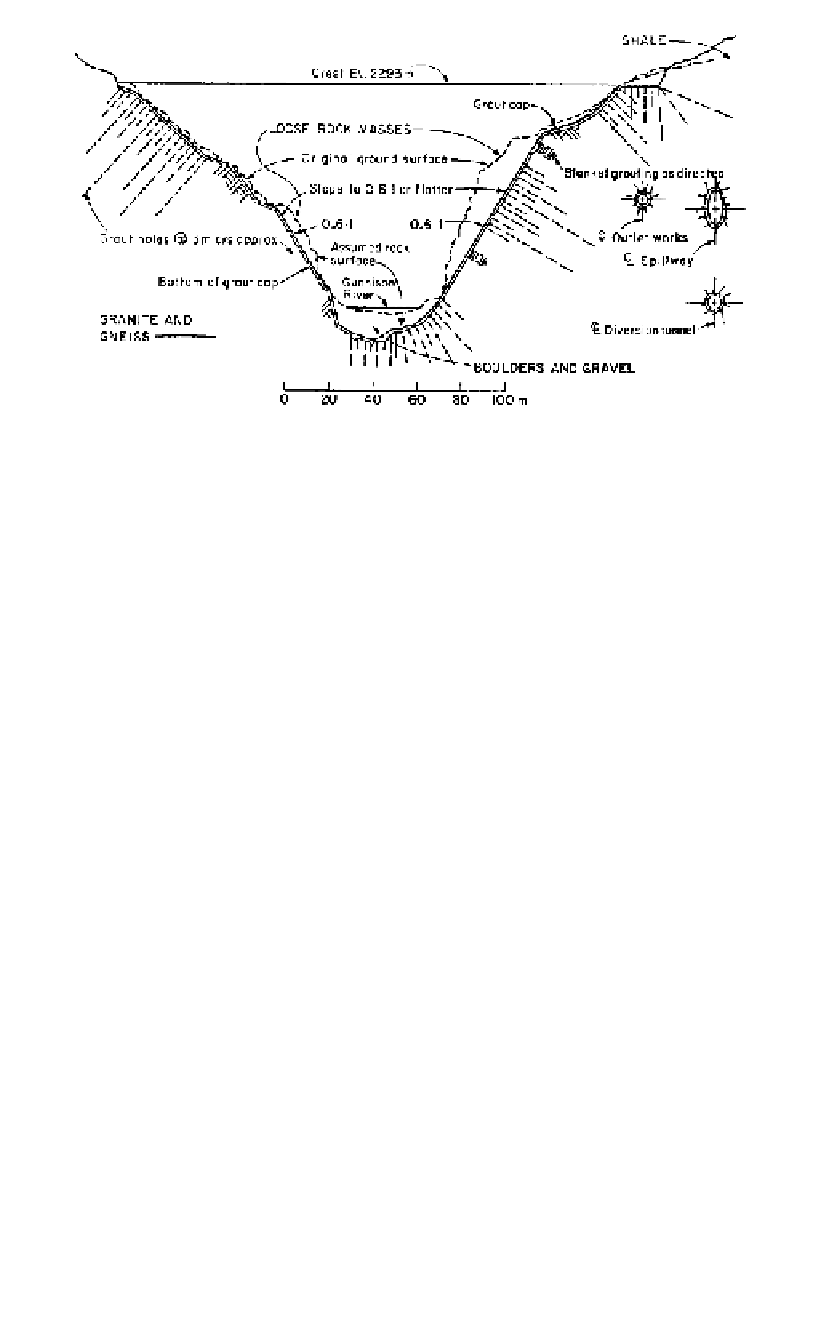Environmental Engineering Reference
In-Depth Information
Figure 17.15.
Foundation slope correction, Blue Mesa Dam (reproduced from Thomas, 1976).
Reprinted by permission of John Wiley & Sons Inc.
17.6.2
Seam treatment
It is common practice to require that seams of clay or extremely weathered rock which
occur in the cutoff foundation should be excavated and filled with concrete. This is done
to avoid erosion of the seams thus allowing seepage to bypass the earth core and filters.
Thomas (1976) suggests that the depth of excavation and backfill should be 2 to 3
times the width of the seam. USBR (1984) recommends that openings narrower than
50 mm should be cleaned to a depth of three times the opening width, and seams wider
than 50 mm and up to 1.5 m should be cleaned to a depth of three times the width of the
opening or to a depth where the seam is 12 mm wide or less, but not greater than 1.5 m
depth. Wallace and Hilton (1972) indicate that for Talbingo dam all seams wider than
12 mm were excavated to a depth equal to the width and filled with concrete, or that the
area was covered with thick grout, pneumatically applied mortar or concrete. This latter
approach seems more reasonable for narrow seams particularly over areas where there
are a number of narrow seams.
Figure 17.16
shows seam treatment adopted for Kangaroo Creek Dam, and
Figure 17.5
that adopted for Dartmouth Dam. For Thomson dam, the foundations of which were
often closely jointed rock criss-crossed by seams, and crushed zones, the whole of the cut-
off was shotcreted except when it was already covered by slope correction concrete.
These examples can be used as a guide to reasonable practice. The authors would pre-
fer not to dig out the seams, but to ensure that they are adequately covered with concrete
or shotcrete, since their nature is not likely to change with one or two widths, and the con-
crete or shotcrete will be held in place by the earthfill.
For foundations with continuous seams filled with dispersive or erodible soil and rock,
a horizontal filter drain may be needed downstream of the earthfill core to allow founda-
tion seepage to emerge in a controlled manner.
17.6.3
Dental concrete, pneumatically applied mortar, and slush concrete
The following recommendations on the placement and quality of dental concrete, pneu-
matically applied mortar or concrete and slush concrete are taken from USBR (1984).
They are consistent with the authors' experience of what constitutes good practice.

